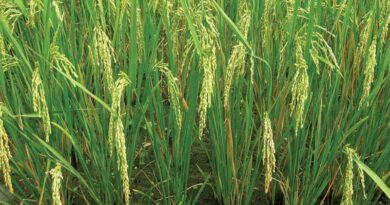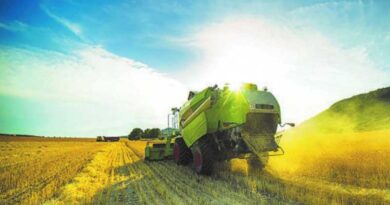6 Tips to Effectively Harvest Lodged Corn
25 September 2023, US: Harvesting lodged corn requires special attention and techniques to maximize yield while minimizing crop damage. While lodged corn can negatively impact yield, preparing for harvest with the following tips can set your operation up for success.
What Is Lodged Corn?
Lodged corn refers to corn plants that have fallen or leaned over due to strong winds, heavy rain, weak root systems, or other plant health challenges. When this occurs, plants are more susceptible to diseases, have reduced access to sunlight and often deteriorate in grain quality.
Lodged corn also makes it difficult for equipment to efficiently pass through the field, resulting in more challenging harvesting processes, slower harvesting times and increased yield losses of 5-25%.1
Measuring losses in the field can help adjust your harvest strategy. For example, every 3/4-lb ear in a hundredth of an acre plot equals a loss of one bushel per acre.2 You may need to check unharvested areas ahead of the combine to mitigate excessive losses. Look for dropped ears by walking through the field and kicking stalks on the ground.
A potential risk at any stage of corn growth from early vegetative to late reproductive stages, lodging is a common challenge — but you can still ensure yield success with an effective harvest strategy.
How to Harvest Lodged Corn
Every field and situation may require a different approach, so it’s important to adapt these steps to your unique circumstances. Here are some recommended steps to effectively harvest lodged corn and minimize yield losses.
1. Adjust Combine Settings
Ensure harvesting equipment is properly adjusted to handle lodged corn. Lower the header height to pick up fallen plants and adjust the gathering chains or augers to ensure a smooth flow of corn into the combine.
2. Adjust the Corn Head Angle
Adjust the corn head angle to match the direction of the lodged corn. In some cases, use a corn head equipped with stalk rollers. These rollers break up lodged corn and improve the feeding of the plants into the combine.
3. Slow Down
You may also want to slow down your combine speed to 2 mph3 to be sure that grain separates from the stalks. You will pick up more lodged ears by slowing down, increasing your overall yield.
4. Use a Grain Cart
A grain cart allows you to unload the combine more frequently and efficiently, reducing weight and strain on the combine and handling the lodged corn more effectively. Grain carts also minimize soil compaction compared to large trucks or trailers, which can negatively impact crop growth in subsequent seasons.
5. Harvest in Dry Conditions
Corn should be harvested at moisture levels appropriate for storage. Wet corn can be prone to mold and spoilage during storage. Wait for the corn to dry before harvesting as dry conditions reduce the risk of further lodging and make it easier for the combine to separate the grain from the stalks. It also reduces the risk of field damage caused by heavy machinery.
6. Prioritize Harvesting Lodged Areas
Harvest lodged areas first to prevent further damage and losses. This allows you to salvage as much of the crop as possible before moving on to standing corn. In severe lodging conditions, harvest against the direction of the lodging and adjust your gathering chains as closely as possible to grip rotten stalks.
Also Read: Nirmala Sitharaman launches three key initiatives of the Ministry of Agriculture
(For Latest Agriculture News & Updates, follow Krishak Jagat on Google News)















